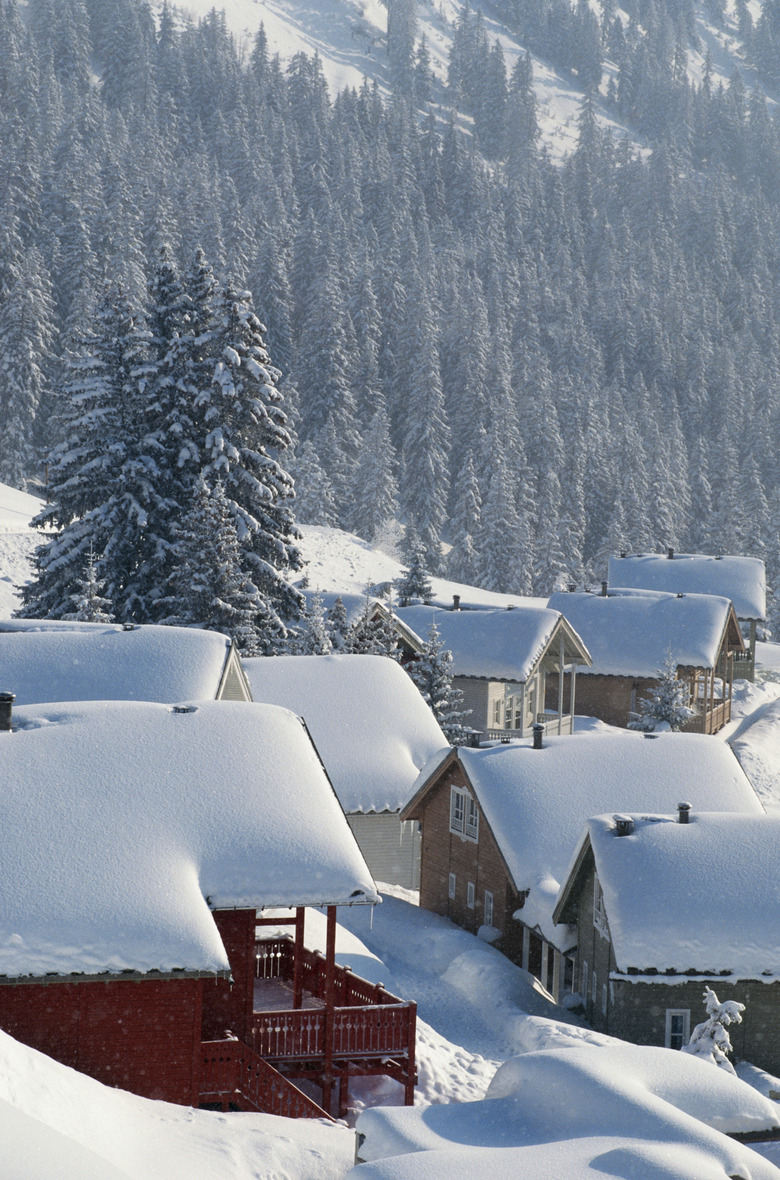Comparing And Contrasting A Temperate Biome And A Taiga Biome
The Earth is a place of stunning natural diversity. Nonetheless, most regions can be grouped into one of several broad categories that correspond to the Earth's primary ecological communities. (see References 1) These communities, known as biomes, can be classified based on climate, vegetation and animal life. (see References 2) Temperate biomes include both forest and grassland, whereas the taiga biome is thoroughly forested.
Cold and Colder
Cold and Colder
The temperate forest biome covers latitudes ranging approximately from the southern United States to southern Canada, while the taiga biome, also known as boreal forest, extends from the latitude of southern Canada to about 60 degrees north latitude. (see References 1, References 3) Thus, these two biomes are adjacent, which explains the many similarities between taiga and northern temperate forests. Both biomes have four distinct seasons, but the temperate forest climates cover a much wider range of temperatures and precipitation patterns. Taiga, in contrast, is reliably cold: most of the precipitation falls as snow, winters are severe and the growing season is short — about 130 days compared to 140 to 200 days for temperate forests. (see References 4)
Broad Leaves and Needle Leaves
Broad Leaves and Needle Leaves
Many temperate forests are populated by deciduous trees, which do not retain their leaves during the winter, though some temperate areas, especially along coasts or at higher elevations, include forests dominated by coniferous species. Common trees in deciduous forests include species of oak, maple and ash. Species of pine, cedar, juniper and redwood predominate in coniferous temperate forests. Many temperate forests also contain a mix of types. Some temperate forests have a relatively thin leaf canopy that encourages an abundance of understory plants, such as wildflowers, shrubs and berries. Taiga vegetation is, in general, much less diverse. The landscape is dominated by cold-tolerant evergreen trees such as pine, fir, spruce and larch, and fewer understory plants can thrive in the low-light conditions underneath the thick evergreen canopy.
Different Trees, Different Soil
Different Trees, Different Soil
The soil in deciduous temperate forests is moderately to highly fertile. This is attributable in part to the parent rock materials from which these soils were formed, but also to the important factor of decaying leaves. Each fall, deciduous trees deposit large quantities of valuable organic matter onto the soil surface, along with mineral nutrients that were absorbed by the trees' extensive root systems and then stored in leaf tissue. Coniferous temperate forests usually develop in areas of naturally poorer soil, because coniferous species are more tolerant of infertile soil than deciduous species. Taiga soils also tend to be fairly poor — rocks impede root penetration, the sandy texture reduces the soil's ability to retain nutrients and the pH is below the optimal range for many plants.
Cold-Hardy Creatures
Cold-Hardy Creatures
Taiga and temperate forests are home to similar animal species, especially in northern temperate forests where harsh winters reduce the populations of animals that are not adapted to cold weather. Both biomes include a variety of birds, such as:
- wolves
- foxes
- bears
In general, taiga contains more highly cold-tolerant animals, such as the Canada lynx and the snowshoe hare, and temperate forests contain more amphibians and reptiles.
A Sea of Grass
A Sea of Grass
The temperate region also includes grasslands. The most familiar examples of this biome are the vast prairies of central North America and the Eurasian steppe. Temperate grasslands tend to be hotter and drier than taiga, though they can extend into northern areas with severe winters. Lower precipitation — along with windy winters, animal grazing habits and various other factors — impedes tree growth and favors perennial grasses; this difference in dominant vegetation is the most striking contrast between temperate grassland and taiga. Temperate grassland also includes numerous animal species that are absent or uncommon in taiga, such as wild horses, prairie dogs and meadowlarks.
References
Cite This Article
MLA
West, Joseph. "Comparing And Contrasting A Temperate Biome And A Taiga Biome" sciencing.com, https://www.sciencing.com/comparing-contrasting-temperate-biome-taiga-biome-12696/. 13 March 2018.
APA
West, Joseph. (2018, March 13). Comparing And Contrasting A Temperate Biome And A Taiga Biome. sciencing.com. Retrieved from https://www.sciencing.com/comparing-contrasting-temperate-biome-taiga-biome-12696/
Chicago
West, Joseph. Comparing And Contrasting A Temperate Biome And A Taiga Biome last modified March 24, 2022. https://www.sciencing.com/comparing-contrasting-temperate-biome-taiga-biome-12696/
